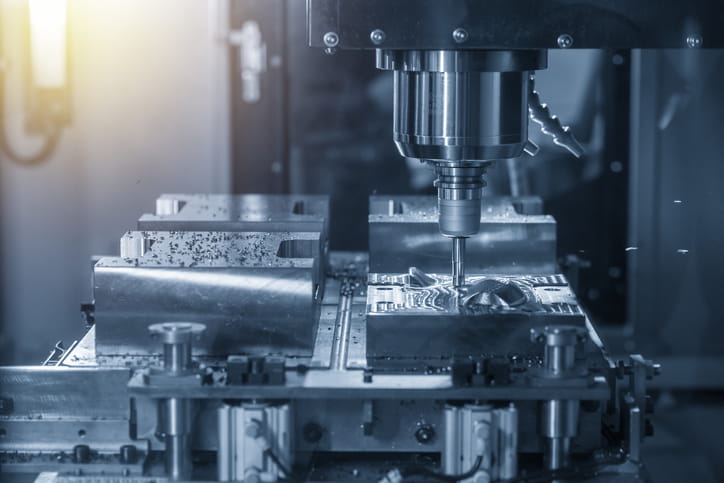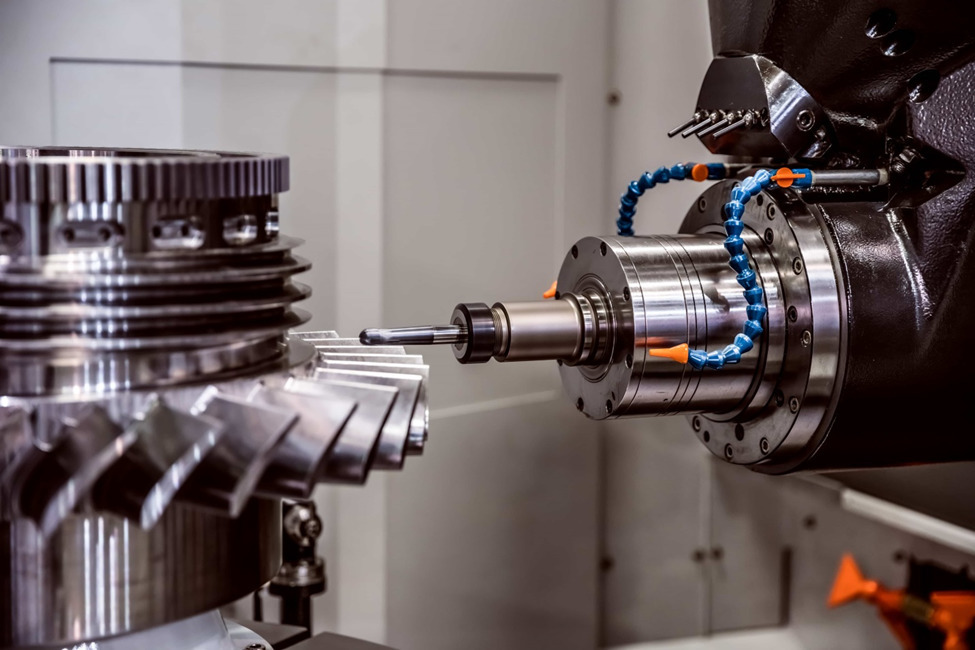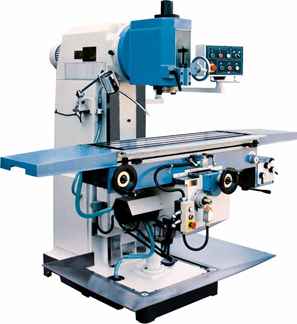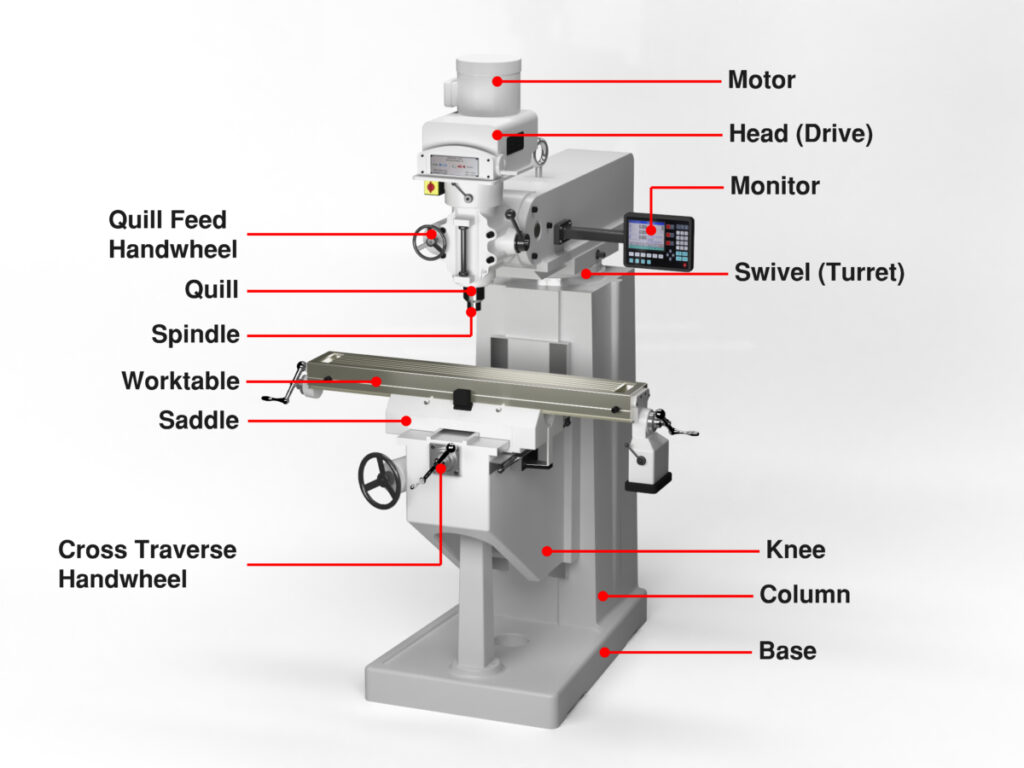Differential indexing is an important technique used in milling machines to allow precise angular rotations of the workpiece. This method is especially useful on computer numerical control (CNC) milling machines to generate intricate gear profiles and bolt-hole circles.
By utilizing a spur gear differential, fractional advances of the indexing crank can be attained in relation to the spindle rotation. This allows more precise angular movements than possible with simple indexing. CNC controls can easily be programmed to calculate and select the precise gear settings and crank movements required to generate any desired angle, enabling extremely accurate machining.

Differential indexing combines two inputs, the index crank's rotation and the spindle's, through a set of change gears. This produces extremely fine angular advances of the worktable with each crank movement. Understanding how to set up and utilize differential indexing properly is essential for any CNC machinist looking to expand their capabilities and improve workpiece precision.
This article will review the mechanics and calculations behind differential indexing on CNC milling machines. We will also provide examples and techniques for its effective use in machining applications.
Differential indexing is a method that allows for precise angular rotation of the workpiece on a milling machine. It combines two inputs - the index crank's rotation and the spindle's - through a gear train to produce extremely fine increments of worktable movement.
Simply, it provides a way to divide a full rotation into finer fractions than direct indexing can achieve. This is done through a gear differential, similar to the differential in a car, which mixes two angular motions.
A manual mill allows an operator to accurately generate bolt circles, spline shafts, gears, and more by advancing the table-specific small angles with each crank rotation. The gears change the ratio between the index crank and spindle, letting you dial in a divider gearbox.
For CNC mills, differential indexing allows precise rotations to be programmed, enabling the machining of intricate components requiring top-tier accuracy and repeatability. The controllers can be set up to move the precise angle needed, using the differential to split each rotation as granularly as needed by the application.
It's a versatile manual and CNC technique utilizes a gear-based differential to split rotations into tiny increments, permitting highly precise angular indexing unmatched by other approaches. This opens up new accuracy and flexibility for milling applications.

Differential indexing brings unique advantages to CNC milling that can unlock new levels of precision and capabilities. There are several compelling reasons why CNC machinists should utilize this technique:
The gear differentials at the heart of differential indexing allow dividing a single rotation into tiny fragments - increments down to tenths or hundredths of a degree. This grants precision positioning and smooth contours not otherwise possible. Components with delicate features like tiny splines, detailed gears, and intricate lobed profiles can be produced.
An essentially programmable dividing head, intricate hole patterns, non-standard bolt circles, multi-start threads, and other unique geometries can be machined flexibly as never before. The CNC controller can move the table, spindle, or dividing head to any precise angle the features need - something impossible to do quickly and accurately via manual setups.
The programmable precision rotations mean less reliance on complex fixtures and work holding to achieve needed angles and features. Whether an irregular pitch circle, multi-point polygon, or intricate worm gear - it can be machined accurately with ease by letting the program handle the precision indexing.
Switching between different feature spacing, hole counts, gear teeth, etc., becomes software-based. Mechanically changing indexing plates and gears to achieve different increments is no longer needed. Reducing physical changeover saves significant setup time.
Finely controlled and repeatable rotation indexing minimizes scrap loss due to incorrectly machined angles and positions. What is programmed is what will be cut, improving quality and reducing wasted material.

At the core of any differential indexing setup is a sturdy planetary or epicyclic gear system that allows combining two angular motions to output extremely fine increments. This typically consists of one or more sun gears, planet gears, ring gears, and a carrier, meticulously machined and assembled.
The main spindle motor drives the sun gear, while an offset crank gear is powered by the index crank. Their rotations feed into the planetary gear train from opposite sides. The ring gear output is connected to the index plate and workpiece.
The magic occurs as the two inputs provide angular velocity to the gear train. Due to slight differences in gear diameters and ratios, a very small differential motion gets summed. Essentially, tiny fragments of each rotation are combined.
This allows splitting a full turn into tiny slices based on the gear ratio - advancing the workpiece in minute increments like 0.05 degrees or less. A set of change gears with varying tooth counts provides different ratio options to divide further as needed.
Modern CNC utilizes programmable controllers to automate this process with high accuracy. By tracking the rotations and directions of the servomotors on both inputs, any incremental motion can be reliably output repeatedly.
Doing so manually would be nearly impossible. However, based on the program commands, the CNC handles all the precision timing and movements in the background. This allows intricate indexing of holes, shapes, worms, gears, etches to be machined with incredible precision.
The differential gear train acts as the divider, permitting very small fragments of rotation from two sources to be combined. This empowers precise angular positioning unattainable with simple indexing heads. The process is automated and repeatable with CNC control, enabling next-level part geometries.
As discussed earlier, differential indexing utilizes a sturdy planetary gear system, usually with sun gear, planet gears, ring gear, and carrier. The gear tooth counts, and diameters create specific ratios that allow combining the spindle rotation with the index crank rotation to output micro-degree increments.
The mechanics divide a motion into many small fragments, dialing in a highly precise dividing head. The ratios can be customized with change gears to get desired fine increments. So, understanding these fundamental mechanics allows proper setup and calculations.
To successfully employ differential indexing, the machinst must carefully model the system based on mechanical constraints and desired output. This mathematical modeling sets up the number of teeth, gear ratios, increments per turn, number of feature cuts needed, total rotations, and more specifications that get programmed.
Solving these vars mathematically before writing code ensures the CNC program will produce the intended hole spacing, gear profiles, lobe counts, etc., to spec. Taking the time upfront to calculate positions prevents scrap parts.
The math-validated, proven CNC programming procedures come into play around defining work coordinates, positional moves, tool compensations, etc. Planning roughing routines around final passes helps get a specified finish and accuracy. Techniques like leaving stalks in semi-finished gears allow final differential divide cutting access to high precision.
Other considerations are building clearance moves to avoid collisions, chip management, coolant use, etc., that aid the machining process. The intricacies of programming methodology blend with the unique reqs of differential indexing for success.

Accurately working through differential indexing rotations relies on a simple formula accounting for these key variables:
Properly implementing differential indexing requires understanding the gear train mechanics and ratios. This includes the number of planet gears, sun/ring gear tooth counts, gear pitch, and more. Modeling the system allows calculating the motion splitting output.
Selecting the appropriate change gears is crucial to divide the motions as intended. Change gear sets allows modifying the gear ratios to program specific micro-increment degrees per spindle revolution. The ratios can be easily swapped out for different needs.
The movement of the index crank and its gearing into the train determines how much it contributes to the output per turn. Generally, the crank is geared to move much slower than the spindle to contribute fine fragments of motion. The ratio impacts the rotation splitting.
When machining intricate patterns, the number of cuts per work revolution comes into play. This essentially sets how many times the differential splitting occurs per pass. Combining with the degree increment sets total turns.
Most importantly, the end design requirements drive the needed indexing precision and rotations. Complex patterns may need very fine increments of just a few arc seconds, requiring modeling the system to deliver such micro motions. The application demands drive specifications.
Accounting for the above, the gear train can be modeled mathematically to calculate the number of turns, degree increment per turn, and total rotation to machine the features as specified. The ratios and splits are critical to deriving at the programming level.
So, understandably, quite a bit of upfront analysis is crucial in deploying differential indexing successfully to achieve application goals. However, the superior accuracy and flexibility make it worthwhile for skilled CNC machinists.
Getting a feel for how differential dividing works takes time and experience. Running some initial test setups with indicator checks and slowly debugging any issues is wise. Develop an intuition for how changing the gears and ratios impacts the tiny increments summed from the split motions.
Do the math thoroughly before machining expensive materials. Derive the gear ratios and tooth counts needed to divide as intended. Account for planet gears, ring gear pitch diameter, index crank contribution, and other factors in the train. Model the system carefully on paper first.
Plan out the full CNC code required for the job, including positioning, zero points, depth passes, etc. Map the rotation commands needed to access the desired hole circles, geometry indexes, thread leads, etc. Account for proper clearances, tooling, and stepover, as with any CNC job.
Try test cuts in inexpensive metals to prove program logic and workflow before attempting on the final stock. Refine speeds, feeds, and passes to achieve finish and precision requirements. Address any hiccups upfront that emerge from trying test runs.
Use indicators, protractors, radii gauges, optics, and other metrology tools to verify actual machined increments vs programmed. Confirm the angles, hole spacing, wall quality, etc., meet specifications after initial runs, and fine-tune as needed. Measurement confirms success.
Mastering precise differential division in CNC is an iterative process of calculated CNC programming integrated with hands-on testing and inspection to prove results. But once understood, the exceptional flexibility and accuracy open new machining possibilities.
Differential indexing shines for precision gear work. Lead screw drives can cut standard spur or helical gears but differentially indexed CNC truly excels at splines, cluster gear sets, worm drives, and complex profiles with intricate tolerances, wraps, and tooth forms. The flexibility empowers very accurate gear cutting.
From simple center drill hole circles to complex polygons and shaped patterns, differentially driving the index plate or rotary table allows any incremental spacing. Regular or irregular pitch circles for bolts, precision component mounts, fluid dispersion layouts, and more become straightforward programming tasks.
The vise can leverage differential indexing when mounted directly to the mill table. By locking the vise base but leaving the movable jaw able to rotate, very precise cutoff split lines and complex profiles can be indexed and carved into the jaw faces. Handwheels no longer limit complexity.
Using ball end and corner radius cutters, freeform shapes can leverage differential indexing to minimize stepovers. Streaming the rotation increments to match the toolpath contours minimizes the scalar overlaps for finishing. Custom medical components, injection molds, and (ved) turbine blades benefit.
Cutting double or triple-start fastener threads, leadscrews, or worm drives is simplified by programming the differential gear ratios to index the starts properly. No mechanical change gear swaps are needed to set specific leads using CNC-controlled differential rotation.
The applications push into traditional and emerging areas thanks to the smart merging of calculation, programming, and micro-degree gear splitting empowered by differential indexing systems.
Differential indexing is an extremely useful technique for precision CNC milling. Tiny degree increments can be attained using a differential gearset to split and sum micro-motions from the spindle and index crank. This enables intricate bolt patterns, gear forms, contours, starts, and profiles to be machined with exceptional repeatability and accuracy. Understanding how to calculate and program the ratios properly empowers machinists in new ways. Whether cutting common features or innovating complex geometries, differential indexing delivers flexible, precise indexing control to take products to the next level. With continued development, even more applications can benefit from this technology.